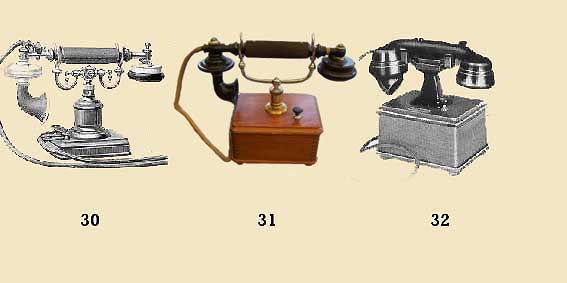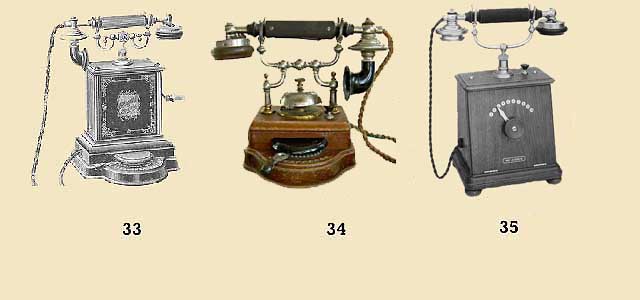| |||||
Ericsson Desk Phones 5
Fig 30: Extension Phone AC1000. No bell or magneto. It was designed to be used within audible range of another phone. Small polished wooden base, either oak or walnut. Some examples have been seen with a marble base, but this does not appear to be an official conversion. Old No. 395 also had the metal pillar in earlier models instead of the wooden turret shown here. 1892-1911. Fig 31: Extension Phone N1100 . A basic little British extension or battery-signalling telephone in a polished walnut case. Produced from 1911 to about 1920. Electrically it is similar to the Swedish-produced Model AC1000 shown in Fig 30. Sterling produced a very similar model, with a very squared-off cradle and a more elaborate pillar. Their earliest version also used the Ericsson ornate cradle and the standard Ericsson handset. Fig 32: Extension Phone N1105A .This is an updated version of the N1100 intercom phone with a modified cradle for the new bakelite handset.
Fig 33: Intercom No. 779 . This is a typical style for desk intercoms, with the switchgear mounted in a plinth under the base of an otherwise fairly standard model AC300 (see Page 38). Desk intercoms were redesignated as the AE series in the new numbering scheme. Fig 34: Intercom No. HA150 . This is an intercom version of model BC2050, sold in Australia. It was in production at least until 1927. It has a fixed cradle and press-switch handset. Fig 35: Intercom Model N1641-1645. Timber case, rotary switch to select up
to 30 lines. The 5 lines version is Model N1640
| |||||


